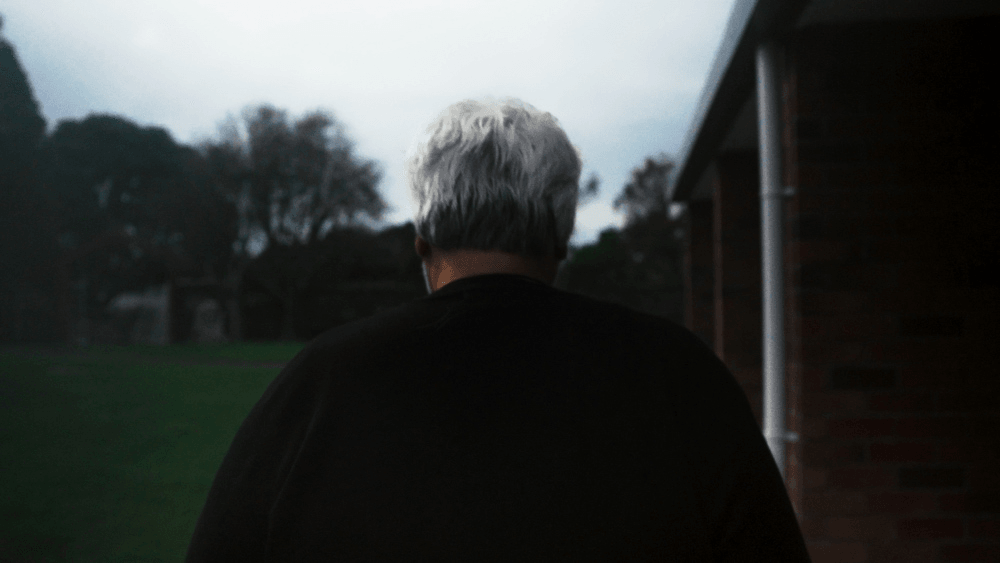The Spinoff is proud to present the latest in our Frame documentary series produced by Wrestler and funded by NZ on Air. Under The Korowai looks at Te Whare Marie, a kaupapa Māori mental service provider that is combining tohunga-led cultural therapy and clinical methods to help young Māori understand, rather than fear, their gifts.
Allister Bush is a doctor. A child and adolescent psychiatrist to be exact. He describes his work as “doctoring but with focus on the mind or emotional wellbeing.” Originally from Christchurch, Bush studied medicine at Otago, and then practised as a house surgeon in Hawke’s Bay. He worked in paediatrics for a bit, before starting his training in psychiatry in Wellington.
Bush applied for a job at Te Whare Marie, a kauapapa Māori mental health service in Porirua, while he was still training, and started in 2005. A month later Wiremu NiaNia joined.
One things doctors in Western medicine aren’t often trained in is what to do when someone is being visited by their long-dead ancestors.
“He struck me as a pretty friendly guy. And he was very helpful… he helped me out with things, like he gave me a karakia to use when I was meeting with families. Helped me with a little bit of te reo Māori, but apart from that, I had no idea what he did.
“Then he met up with some families we were really struggling to engage with. Something shifted, and the family relaxed a lot and were much warmer in their relationship with us. So I was really interested to know how he did that.”
“At the time I didn’t really realise he was a Māori healer. It took me quite a while to understand that.”
Wiremu NiaNia (Tūhoe, Ngāti Tūwharetoa, Ngāti Kahungunu) says he comes from a long line of “rustlers and pirates”. He was whāngai and raised by his nan – a tohunga in her own right, who helped him understand the gift that he had inherited from her.
“She told me I was about three years old when I started seeing things. My first memory is probably when I was about eight years old. I’m walking beside this person in the whare, leading me outside. I couldn’t open the door, he opened the door, lead me outside, and was saying ‘come for a walk’. And then I hear my kuia running, yelling out to me, ‘Kia tupato, kia tupato, be careful!’ And she ran and grabbed me and took me back inside. She said ‘You’ve just got to be careful with these things. They’ll try and take you’. So that person wasn’t real. I knew that afterwards. I was terrified.
“So I grew up with seeing these things and hearing different things, and it was her that sort of guided me along in how to handle it. Otherwise, I think I’d be sitting in this whare on the opposite side of the desk.”
The pair have now worked together for 12 years – Bush offering clinical treatment and NiaNia offering cultural therapy and spiritual guidance. They’ve even written a book together – Collaborative and Indigenous Mental Health Therapy: Tataihono – Stories of Maori Healing & Psychiatry – which forms the basis of a new short documentary, Under The Korowai.
Under the Korowai, directed by Brandon Te Moananui, tells the stories of William and Jamie, two young Māori men diagnosed with mental illness. After working with Wiremu and Te Whare Marie, both are coming to terms with their gifts and their limitations.
Wiremu’s cultural therapy works in collaboration with clinical treatment. Simply acknowledging that there is a long tradition of ‘seeing’ in te ao Māori, and that they are surrounded by whānau, helps patients feel less afraid of their symptoms.
“I think it’s about making people believe that they can be helped.
“I actually get people sometimes coming in who have lost loved ones and ask, ‘Do you do readings?’ Look, I can’t even read a book. I’m not a medium. But when you talk about somebody who’s lost a child and wanted to know in their grief, is there any way they will be able to meet their child later on, or is there any way of making that connection?
“And you know, I’m able to say yeah, there is.”





